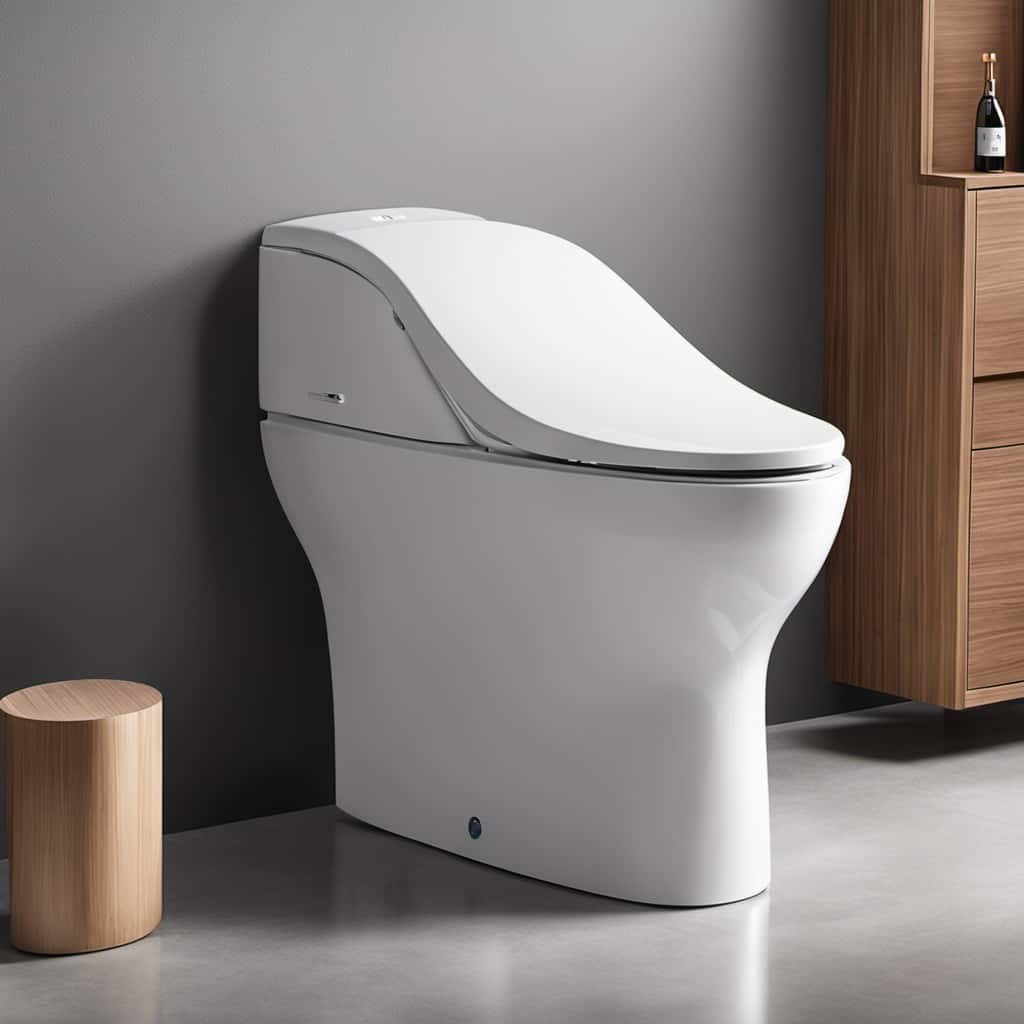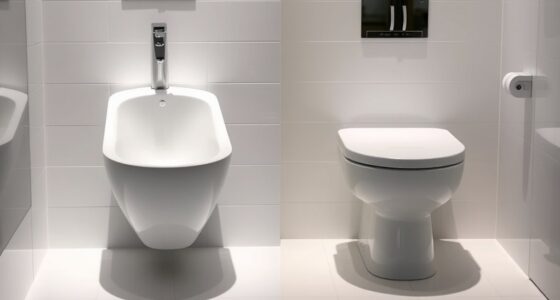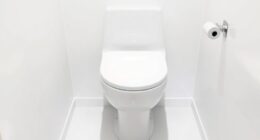Are you perplexed by the absence of water in your toilet tank? It’s like having a car without fuel – frustrating and inconvenient.
But fear not! We’ve got your back. In this article, we will explore the common causes for this problem and provide you with simple troubleshooting tips to resolve it.
So, buckle up and get ready to flush away your worries as we delve into the world of toilet tank water woes.
Let’s dive in!
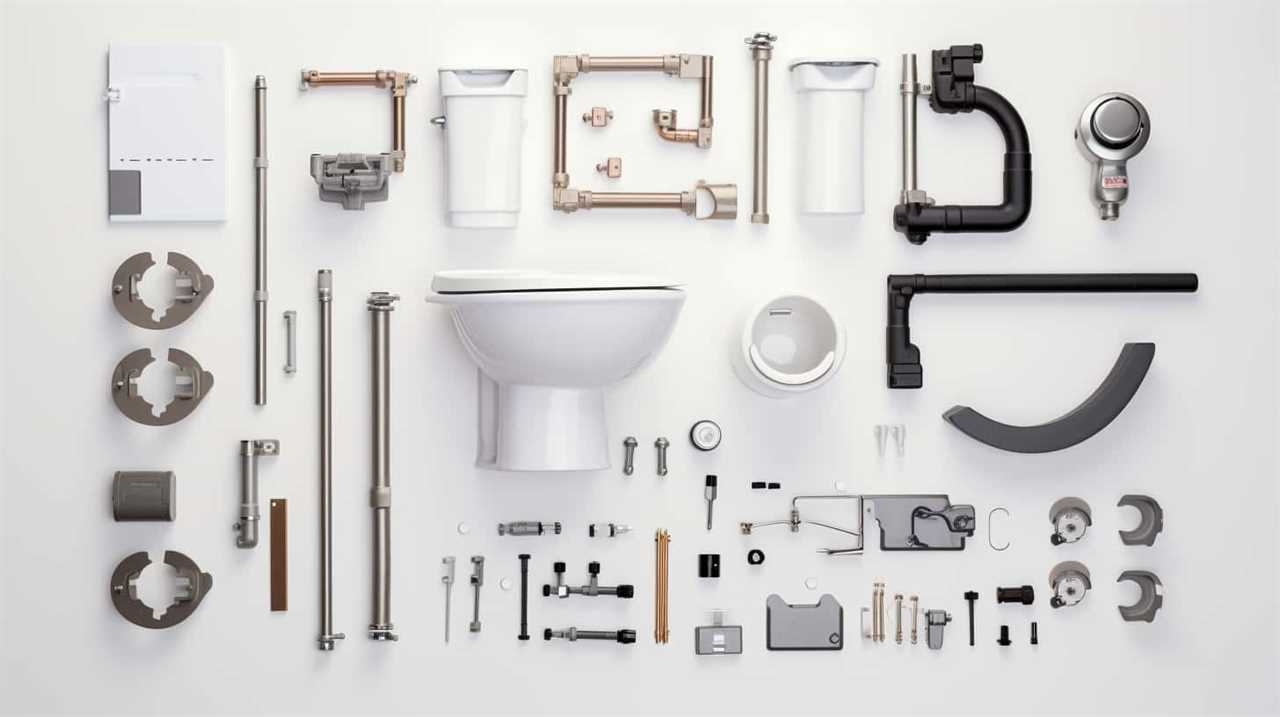
Key Takeaways
- Common causes of no water in toilet tank include closed water supply valve, toilet tank leaks or cracks, worn-out gaskets or faulty connections, and lack of proper maintenance and inspection.
- Troubleshooting tips for low water levels include checking water pressure, ensuring the main water supply valve is fully open, looking for obstructions or leaks in the supply line, inspecting the overflow tube, verifying proper positioning, clearing any debris or clogs, and checking the float valve and adjusting it to allow more water into the tank.
- Checking and fixing a faulty fill valve involves turning off the water supply to the toilet, flushing the toilet to drain the tank completely, locating the fill valve and checking for damage or debris, adjusting the water level using the adjustment screw, and considering replacing the fill valve if necessary.
- Reasons for a blocked water supply line to the toilet can include clogged pipes due to mineral deposits or debris, accumulation of sediment or foreign objects, water pressure issues in the plumbing system, and insufficient water flow into the toilet tank. Regular maintenance is important for uninterrupted water flow.
- Potential problems with the toilet’s float mechanism include a stuck or jammed float, incorrect water level in the tank, damaged or worn float, and float not triggering the valve properly. Inspecting and possibly replacing the malfunctioning float is necessary to ensure proper water flow.
Common Causes of No Water in Toilet Tank
One common cause of no water in the toilet tank is when the water supply valve is closed. If the valve isn’t fully opened, water won’t flow into the tank, leading to a lack of water for flushing.
Another potential cause of no water in the toilet tank is toilet tank leaks or cracks. Leaks can occur due to worn-out gaskets or faulty connections, causing water to escape and not reach the tank. Cracks in the toilet tank can also prevent water from filling it properly.
It’s important to address these issues promptly to ensure the toilet functions correctly. Regular inspection and maintenance can help detect and fix any leaks or cracks, ensuring an adequate water supply in the toilet tank.
Simple Troubleshooting Tips for Low Water Levels
To address low water levels in your toilet tank, we can try a few simple troubleshooting tips. First, check for any water pressure issues that may be affecting the tank’s fill rate. Ensure that the main water supply valve to the toilet is fully open and that there are no obstructions or leaks in the supply line. If the water pressure seems fine, the next step is to inspect the overflow tube. This tube prevents the tank from overflowing by diverting excess water into the toilet bowl. Make sure the overflow tube is properly positioned and not clogged with debris. Additionally, check the float valve and adjust it if needed to allow more water into the tank. By following these troubleshooting tips, you should be able to resolve the low water levels in your toilet tank.
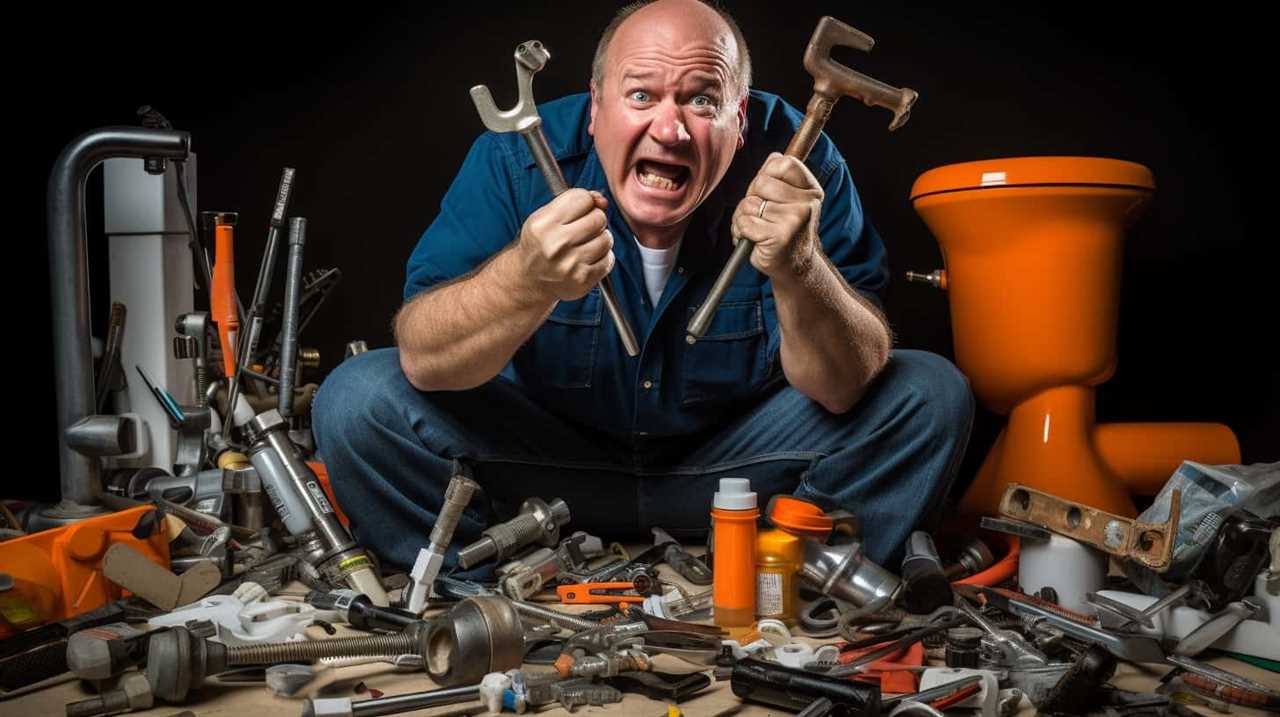
| Troubleshooting Tips | Potential Solutions |
|---|---|
| Check water pressure | Ensure main water supply valve is fully open |
| Look for obstructions or leaks in the supply line | |
| Inspect the overflow tube | Verify proper positioning |
| Clear any debris or clogs | |
| Check the float valve | Adjust to allow more water into the tank |
How to Check and Fix a Faulty Fill Valve
Now, let’s move on to examining the fill valve to determine if it’s faulty and needs to be checked and fixed. If you’re experiencing issues with water not coming into your toilet tank, the fill valve could be the culprit.
To troubleshoot the fill valve, start by turning off the water supply to the toilet. Next, flush the toilet to drain the tank completely. Once the tank is empty, remove the lid and locate the fill valve, which is usually on the left side. Check for any visible signs of damage or debris that may be blocking the water flow.
If you notice any issues, you can try adjusting the water level by turning the adjustment screw on the fill valve. If these steps don’t resolve the problem, it may be necessary to replace the fill valve altogether.
Reasons for a Blocked Water Supply Line to the Toilet
To determine the reasons for a blocked water supply line to the toilet, we need to inspect the various components involved in delivering water to the tank.

One common cause of a blocked supply line is clogged pipes. Over time, debris such as mineral deposits, sediment, or even foreign objects can accumulate in the pipes, restricting the flow of water. This can lead to reduced or completely blocked water supply to the toilet tank.
Another potential reason for a blocked supply line is water pressure issues. If the water pressure in your plumbing system is too low, it may not be sufficient to push the water through the supply line and into the toilet tank. This can result in a weak or non-existent flow of water into the tank.
In both cases, it’s important to address the underlying issue to restore the proper water supply to your toilet tank.
Potential Problems With the Toilet’s Float Mechanism
We’ve noticed a potential issue with the toilet’s float mechanism that could be causing the lack of water entering the tank. The float mechanism is responsible for regulating the water level in the tank. If it malfunctions, it can lead to water level issues.

One possible problem with the float mechanism is a stuck or jammed float. This can prevent the float from rising or falling as it should, resulting in an incorrect water level in the tank.
Another potential problem is a damaged or worn float. If the float isn’t able to float properly, it may not trigger the valve to allow water into the tank.
In either case, it’s important to inspect and possibly replace the malfunctioning float to ensure proper water flow into the toilet tank.
Frequently Asked Questions
How Do I Fix a Leaking Toilet Tank?
To fix a leaking toilet tank, we first need to diagnose the problem. Check the fill valve, flapper, and water supply line for any issues. Once identified, repair or replace the faulty component accordingly for proper toilet tank repair.
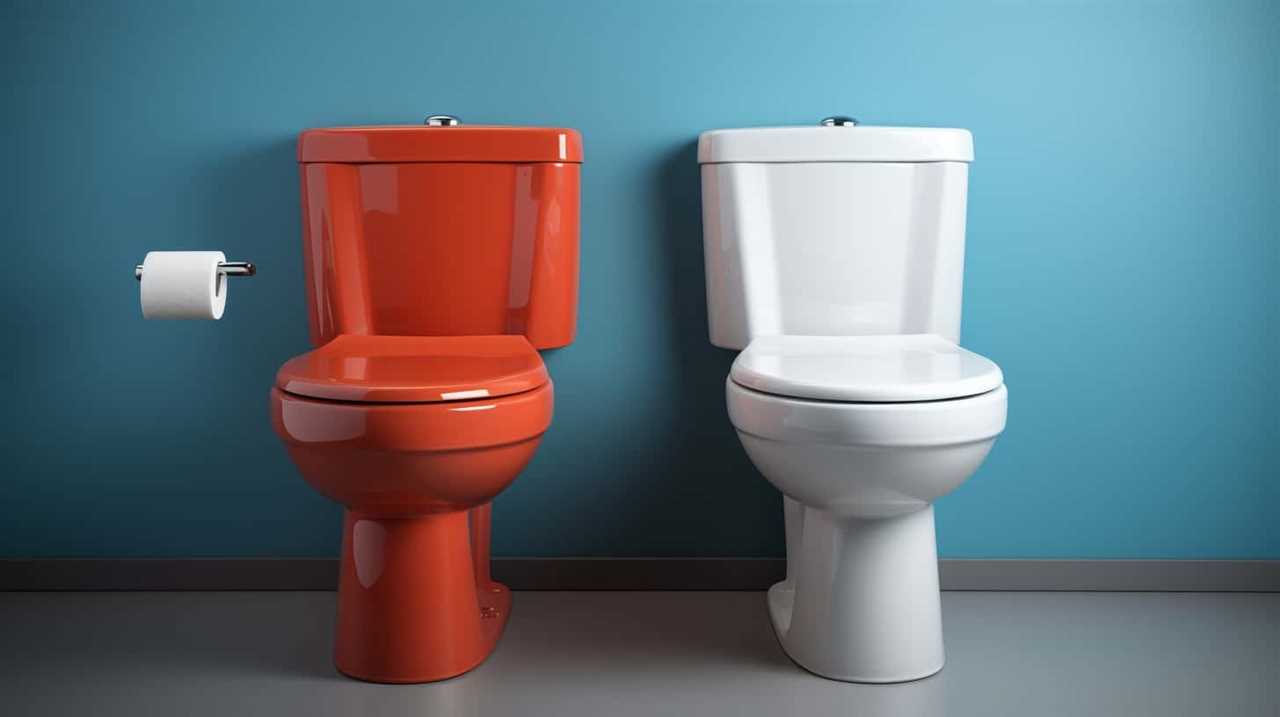
What Should I Do if My Toilet Tank Is Not Filling up After Flushing?
If the toilet tank isn’t filling up after flushing, first check the water supply valve and ensure it’s fully open. If that’s not the issue, it could be due to a faulty fill valve or a clog in the water line. Troubleshooting common toilet issues is essential for proper toilet tank maintenance.
Can a Clogged Toilet Drain Cause No Water to Enter the Tank?
A clogged toilet drain can indeed prevent water from entering the tank. It’s important to check for any blockages and clear them to restore the toilet tank water supply.
Is It Possible for a Faulty Flush Valve to Cause No Water in the Toilet Tank?
Yes, a faulty fill valve can prevent water from entering the toilet tank. It may cause an airlock in the water supply, restricting the flow. A plumber can inspect and repair the valve if necessary.
What Could Be the Reason for a Constantly Running Toilet Tank With No Water?
Troubleshooting low water pressure in toilet tank? The fill valve plays a crucial role in the water supply. We need to identify if it’s faulty or blocked, causing no water to enter the tank.
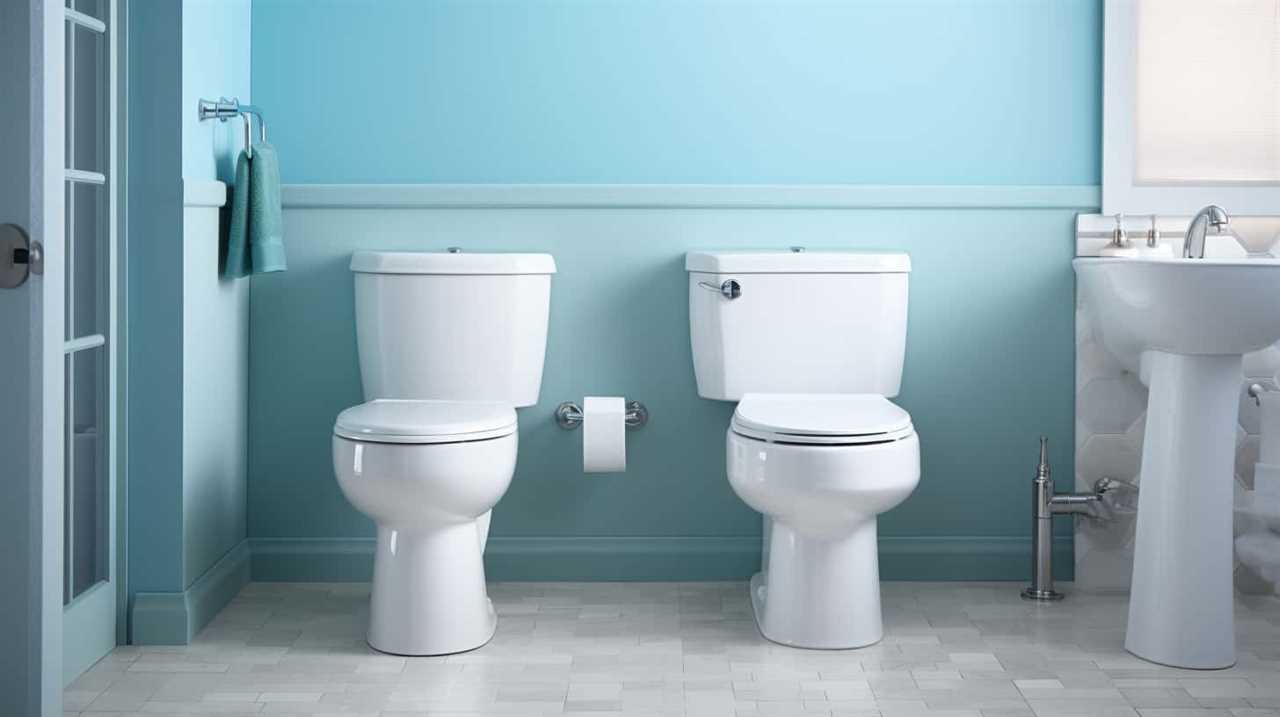
Conclusion
In the mysterious realm of toilet tanks, the absence of water can cause quite a commotion. From faulty fill valves to blocked supply lines, there are numerous culprits behind this watery dilemma.
However, fear not, for armed with troubleshooting tips and a little know-how, you can navigate these murky waters and restore the flow to your porcelain throne.
So dive in, fix that fill valve, and let the water rain down once again.

